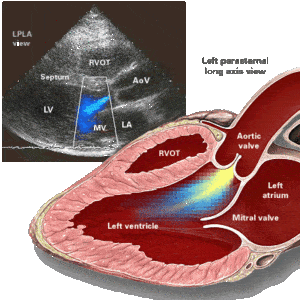What is sinusitis
Sinusitis is a very common condition among people around the whole world. It is an upper respiratory tract infection. The cause is both infectious (by bacteria, virus, fungal) or noninfectious. Approximately thirty-one million people in the United States are affected by sinusitis.
Firstly we should know what sinus is. Sinuses are air-filled cavities in the skull connecting with the nasal cavities. Sinus produces mucus. Mucus is a form of liquid that traps an organism. Apparently, moving the germ away.
Types of sinuses
There are four pairs of paranasal sinuses, they are :
- Frontal
- Ethmoidal
- Maxillary (biggest sinus among these pairs)
- Sphenoidal
These sinuses surround the nose and drain into the nasal cavity through narrow channels. They are called ostium. They have small openings to deliver mucus.
The function of sinuses
- They are hollow cavities so it lightens the weight of the skull.
- They have specialized cells that secrete mucus.
- Mucous traps dust particles and pollutes and pathogens then remove them either by sneezing, coughing, or by swallowing them. After it is destroyed by stomach acid.
Inflammation of the sinuses or swelling of the lining tissue of sinuses is known as sinusitis. During sinusitis openings of sinuses blocked by the accumulation of fluid and as a result, infection occurs.
Types of sinusitis
There are three types of sinusitis according to the duration:
- Acute
- Chronic
- Subacute.
Acute sinusitis: acute sinusitis remains for a short duration. Usually, if it is caused by a viral infection; symptoms persist for one to two weeks. If it is caused by a bacterial infection it may last up to three to four weeks. Seasonal allergy can also contribute to acute sinusitis.
Subacute sinusitis: In the case of subacute sinusitis it may persist for two to three months. Generally, the reason for subacute sinusitis is a bacterial infection and seasonal allergies.
Chronic sinusitis: The duration for chronic sinusitis is more than three months. The bacterial infection is the predominant cause of it. Apart from this structural nasal problem of an individual or persistent allergy is equally responsible for this. Chronic sinusitis is relatively less severe than acute sinusitis.
The most common organisms
The most common organisms responsible for sinusitis:
- Virus: Most common cause of sinusitis is viral upper respiratory tract infection. Following virus are most commonly involved one:
- Rhinovirus
- Influenza virus
- Parainfluenza virus
- Bacteria:
- Streptococcus pneumoniae
- Haemophilia influenza
- Moraxella catarrhalis
- Staphylococcus aureus
- Coagulase-negative staphylococcus species
- Anaerobic bacteria
- Fungus:
- Aspergillus
- fusarium species

Risk factors for developing sinusitis
- Persons having a deviated nasal septum have a risk for developing sinusitis. Their wall of tissue which runs between their right and left nostrils is slightly displaced to one side.
- Persons having nasal polyps are also included in this list. These are non-cancerous grape-like growths in the nose.
- Nasal spur – means bone growth of the nose.
- History of frequent allergic rhinitis.
- Non Allergic rhinitis also predispose to sinusitis.
- Tobacco smoking.
- Immunocompromised patients.
- Persons having contact with mold.
- Patients with cystic fibrosis are also susceptible to develop sinusitis. In this disease thick mucus builds up in their lungs and their lining mucous membrane.
- Recent history of upper respiratory infection.
- Traveling by plane adds to the list since it increases the chance of exposure to a high concentration of germ.
- Dental infection also contributes to sinusitis.
- Genetic cause and environmental factors.
- History of gastroesophageal reflux disease.
- Some hormonal issues contribute to these conditions such as rhinitis of pregnancy, progesterone-induced congestion of pregnancy.
- Others: septal deviation, adenoid hypertrophy, choanal atresia, ethmoidal bulla hypertrophy, paradoxical middle turbinate may cause sinusitis.
Primary immunodeficiency which increases the risk for sinusitis:
- Selective IgA deficiency.
- Common variable immunodeficiency.
Acquired immune deficiency disorder predispose to sinusitis:
- Human immunodeficiency virus
- Cystic fibrosis
- Primary ciliary dyskinesia
- Kartagener’s syndrome
- Transplantation
- Patient having chemotherapy.
Symptoms of sinusitis
Acute sinusitis symptoms
After a common cold or seasonal flu, it is very common to have sinusitis. These are some common feature of acute sinusitis :
- Facial pain or facial pressure
- Pain, tenderness, swelling on cheeks, forehead, and eyes
- Runny nose
- Stuffed up nose (block nose).
- Headache
- Rising temperature
- Loss of sense of smell
- Nasal congestions
- Coughing
- Green or yellow thick nasal discharge
- Less commonly – dental pain, halitosis (bad breath)
If a person has two or more of these symptoms; then it can be said that he or she is suffering from sinusitis.
Chronic sinusitis symptoms
- A feeling of fullness or congestion is present in the face.
- Nasal blockage or nasal obstruction may be present.
- Pus in the nasal cavity.
- Fever
- Runny nose
- Discolored post nasal drip.
- Headache
- toothache
- bad breath
- feeling tired
If a person suffers from these symptoms then they need to consult a doctor to know whether it is sinusitis or not.
Complications of sinusitis
If sinusitis remains untreated it may lead to some serious complications. The person will suffer discomforts until he is fully recovered. Apart from this, untreated sinusitis can lead to the following serious conditions:
- Meningitis
- Sinus abscess
- Brain abscess
- Infection of the bone
Prevention
- Quit smoking and helps others to avoid it (as passive smoking is more harmful).
- Clean your hands with soap and water. During cold flu is very common so avoid touching your face and nose.
- Avoid things from which you have allergies.
Diagnosis
Physical examination
A thorough physical examination and history taking detect sinusitis in most of the cases. Purulent discharge can be seen on inspection. Besides headache, pain, and tenderness in the frontal area indicates frontal sinusitis. In the case of maxillary sinusitis upper jaw and tooth sensitivity present. Ethmoid sinusitis is associated with swelling, pain, tenderness around the eyes and eyelids. In the case of sphenoid sinusitis, people have an earache, neck pain, deep pain on the top of the head.
Investigations
Usually, imaging is not required unless any complications or anatomical problem is suspected.
- X-ray of sinuses – it reveals blockage in mucus secretion, also identifies polyp.
- A complete blood test is also useful in identifying any immunodeficiency disorder such as HIV.
- An allergy test can also be done to identify specific allergic reactions.
- Nasal endoscopy by using a fiber optic scope. It directly visualizes the sinuses and nasal passages.
- Sinus culture.
- Non-contrast CT scan of sinuses. It will provide a three-dimensional picture of sinuses.
- MRI is also useful in seeing internal soft tissue structures to detect anomalies.
Treatments
General measures
- Taking proper rest.
- Drink plenty of fluid such as water, clear soup, etc.
- Keeping your nose moist and hydrated sometimes using a saline mist spray.
- Taking medication such as Antihistamine if you have an allergy.
- Taking vitamin C regularly to boost up your immunity.
- Wash hands regularly.
- Avoid substances that are allergic to you.
- Sleep with your head elevated cause during the night time mucus pools in your sinuses if the head is down. So it is better to use pillows to drain your mucus.
Home remedy
- By stirring half a teaspoon of baking soda and the same amount of non-iodized salt into two cups of lukewarm water. Then take the steam solution through your nose. Repeat the procedure with both nostrils one by one.
Treatment options for acute sinusitis
Generally, sinusitis is self-limiting, but the following treatments are used all over the world.
- Nasal decongestants*
- For pain management acetaminophen or ibuprofen can be used.
- Using Antihistamine will improve allergy. Some of them are for short relief, some are used for the long term (those who have severe allergies or suffer from chronic sinusitis).
- Usually, if the sinusitis is caused by a virus then taking proper rest, using a nasal spray to hydrate nasal passages, drinking lots of fluid will improve the condition.
*One should be careful in using decongestants. Cause if topical nasal decongestants are used for one or two days in a row can cause dependency and show some withdrawal effects after stopping it. Though some tablets containing pseudoephedrine shrink blood vessels and keep the passages open. Oral decongestants can raise your blood pressure. In short, one should not use it without taking the doctor’s advice.
If your symptoms don’t improve in one or two weeks then you need to consult a registered physician. There is a possibility of bacterial infection. Then one has to take antibiotics. One must take it after seeing a doctor. For uncomplicated acute sinusitis, the first-line treatment is Amoxicillin-clavulanate. Cephalosporin and cefuroxime can also be used. People allergic to beta-lactams are prescribed clarithromycin, sulfamethoxazole. If they don’t show any progress then it will be better to use a broad-spectrum antibiotic such as fluoroquinolones, moxifloxacin, gatifloxacin, norfloxacin. In the case of immunocompromised patients, sometimes systemic steroids are also prescribed.
Treatment of Chronic sinusitis
In case of chronic sinusitis broad-spectrum antibiotics are recommended. Besides topical intranasal, steroids such as budesonide, fluticasone, triamcinolone are prescribed by a registered doctor.
Surgery
Surgery is sometimes required to treat chronic sinusitis if medical therapy fails. The following surgeries can be done:
- Nasal polypectomy
- Functional Endoscopic Sinus Surgery (FESS) under general anesthesia. The doctor widens the patient’s sinuses by removing some of the blocked tissue. Besides, they will inflate a tiny balloon in your blocked sinuses; eventually will remove it.
- Septoplasty is used to treat septal deviation.
- Turbinoplasty is also a surgical procedure to reduce any nasal swelling present on the turbinates and repair it.
EndNote
Overall sinusitis is a very common condition. Generally, there is nothing to worry about this unless any underlying medical problem present. Avoid smoking and environmental irritants helps to prevent it.



